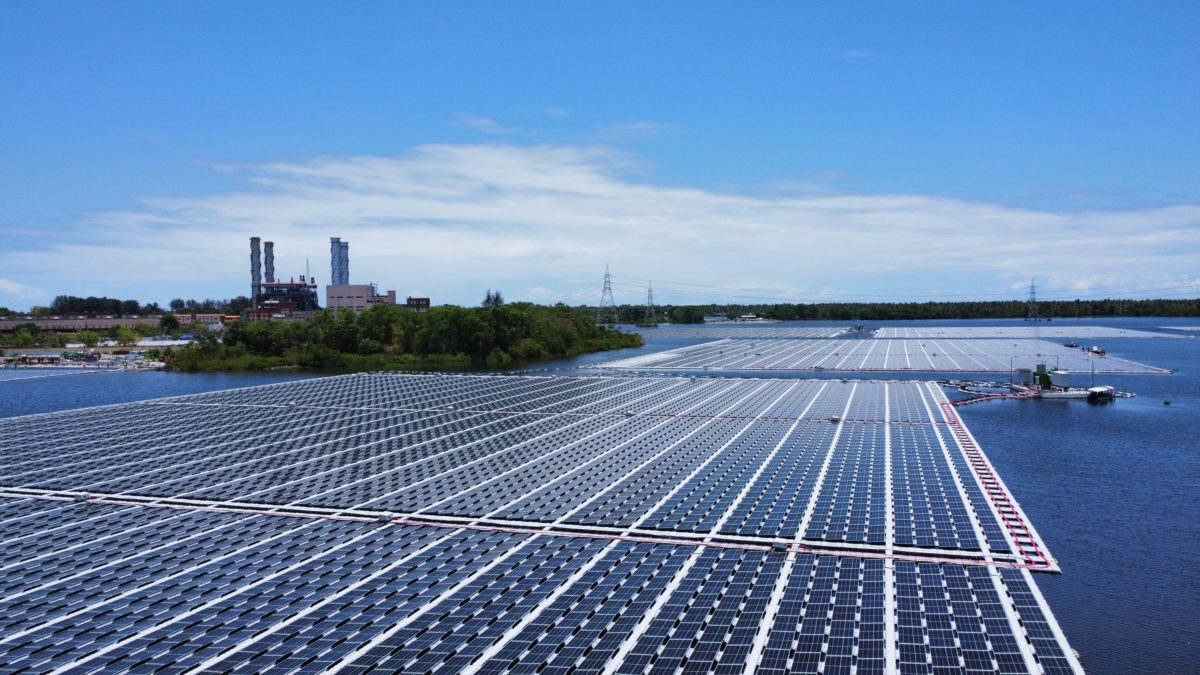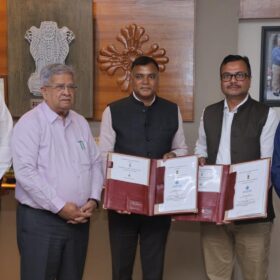A new report prepared under the Indo-German Technical Cooperation on Innovative Solar (IN Solar) shows that the inland still water bodies in India have the technical potential to host 206.7 GWp of floating solar PV capacity.
For assessing the floating solar potential, the team used the GIS-based data for all waterbodies in India (calculated in sq km) by referencing the Copernicus Programme by the European Commission. The data set was filtered to include water bodies having a usable area greater than 0.015 sq km with 12 months of water availability while excluding waterbodies in protected zones. [An area of 0.015 sq km is required to put 1 MW of FPV plant.] The team considered utilization of up to 40% of the water body area for FPV installation as covering 100% of the water body area badly affects biodiversity and aquatic life. Additionally, the team filtered the data set by considering only the waterbodies with per day global horizontal irradiance (GHI) of greater than 3 kWh/m2 and distance from substation (132 kV) less than 25 km.
The team considered 3,101 sq km of water body area meeting the above criteria to derive the floating solar potential. The state of Madhya Pradesh has the maximum floating solar potential of 40,117 MWp, followed by Maharashtra (32,076 MWp).
The project has been initiated under the guidance of the Ministry of New and Renewable Energy, Government of India, and is funded by the Deutsche Gesellschaft für Internationale Zusammenarbeit GmbH (GIZ). Ernst and Young LLP (EY LLP) has led this project along with CSTEP and Fraunhofer ISE (Germany) as partners. The project aims to explore the potential of the new and innovative solar applications (NISA) with reduced land utilization having the potential to foster the targeted expansion of solar PV applications in India.
Projections
Under the moderate scenario, the report authors expect India to install a cumulative floating solar capacity of 30 GW from 2024 to 2040. They assumed 1 MW of floating PV plant requiring capital expenditure (CAPEX) of INR 5.7 crore, translating to an LCOE of INR 4.32/kWh.
The research team assumed an annual reduction of 2.5% in the capex, resulting in a gradual decline of the LCOE from FPV plants, starting from 2024 and extending through 2040. The LCOE is expected to drop to INR 3.72/kWh by 2030 and INR 2.90/kWh by 2040, from INR 4.32/kWh (at capex of INR 5.7 crore per MW) in 2024.
This content is protected by copyright and may not be reused. If you want to cooperate with us and would like to reuse some of our content, please contact: editors@pv-magazine.com.









Solar panel
Solar panel 9729767769